 |
Analysis of Data from Designed Experiments |
 |
|
Latin Square Design |
Analysis Using SPSS
Start
→All Programs → SPSS for Windows → SPSS 15.0/
SPSS13.0/ SPSS10.0 (based on the version available on your machine) →
Enter data in Data Editor → Analyze → GLM →
Univariate → yield → [puts yield under Dependent
list: ] → row → [put row under Fixed
Factor(s): ] col → [put col under Fixed
Factor(s):] trt → [put trt under Fixed
Factor(s):] Continue →
Model... [Opens Model dialogue box] → Custom →
Build Term(s) → Main effects → [puts row, col
and trt under Model:] → Run All.
Data Input:
For performing analysis, input the data in the
following format. {Here one can call the row number
as row, column number as col and treatments as trt. (It may,
however, be noted that one can retain the same name or can code in any other
fashion).
Following
are the brief description of the steps along with screen shots.
· Open Data editor: Start → All Programs → SPSS for Windows → SPSS 15.0/ SPSS13.0/ SPSS10.0
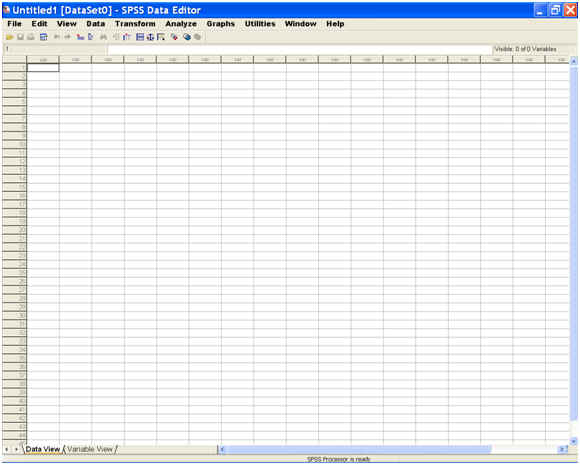
· Enter data in SPSS Data Editor. There are two views in SPSS Data Editor. In variable view, one can define the name of variables and variable types
string or numeric and data view gives the spreadsheet in which data pertaining to variables may be entered in respective columns. In the present case, we enter data in numeric format.
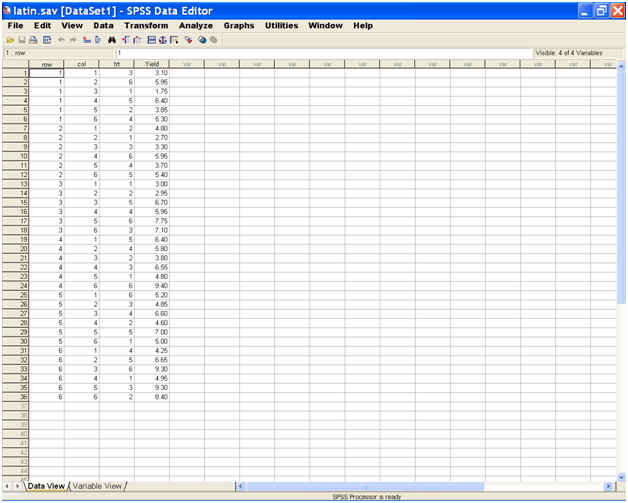
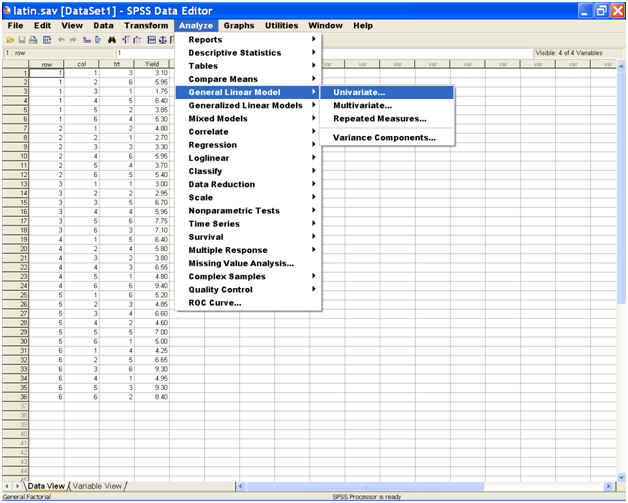
-
This selection displays the following screen:
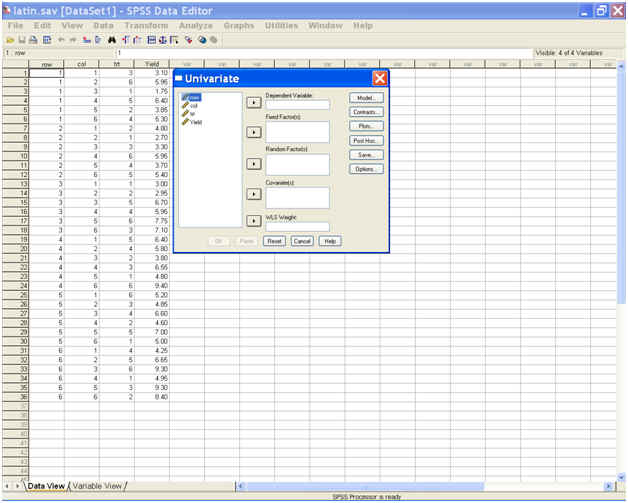
·
Select
yield and
send it to the Dependent Variable; row, col
and trt
may be selected for Fixed Factor(s) box.
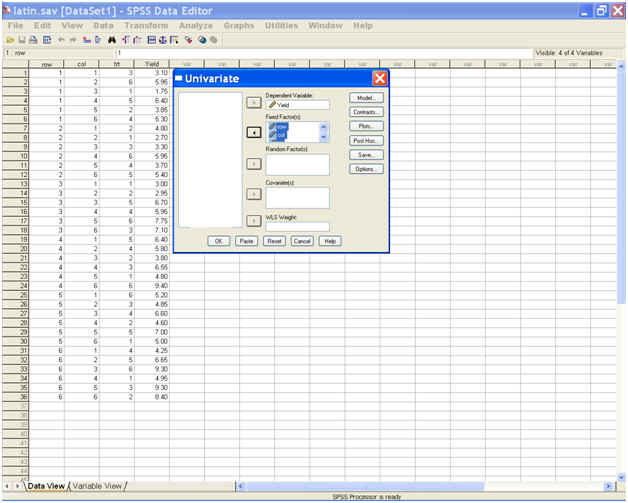
-
Select Model in the Univariate dialog box i.e. → Model... [Opens Model dialogue box] → Main effects → row → col → trt → [puts row, col and trt under Model:]
This selection displays the following screen
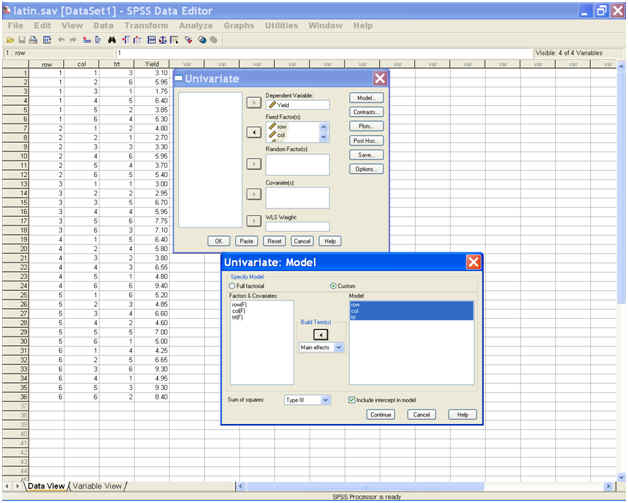
·
Click Continue
to return to the Univariate dialog box.
·
Click
on the Post Hoc tab on the
Univariate dialog box. This selection displays the following screen.
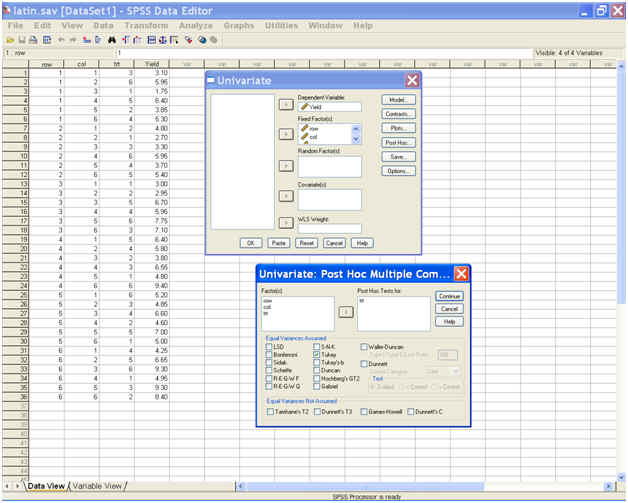
·Put trt under the
Post Hoc Test for: and in the Equal Variance Assumed option check the Tuckey
option for multiple comparison.
·
Click Continue to return to the Univariate dialog box.
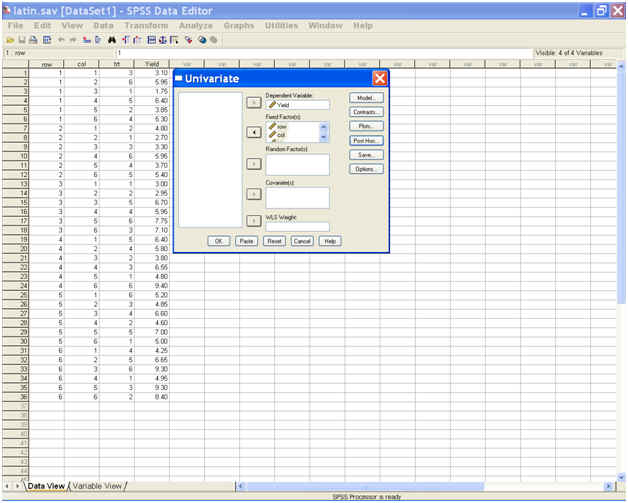
·
To test whether the average effect of T3(100kg N/ha applied
as urea) and T4(100 kg N/ha ) is same as the average effect of T5(T2
+ six insecticidal sprays) and T6(T4 + six insecticidal sprays) click on Paste in
the Univariate dialog box. In the syntax editor define the contrast as
/Lmatrix 'T3 T4 vs T5 T6' trt 0 0 1 1 -1 -1;
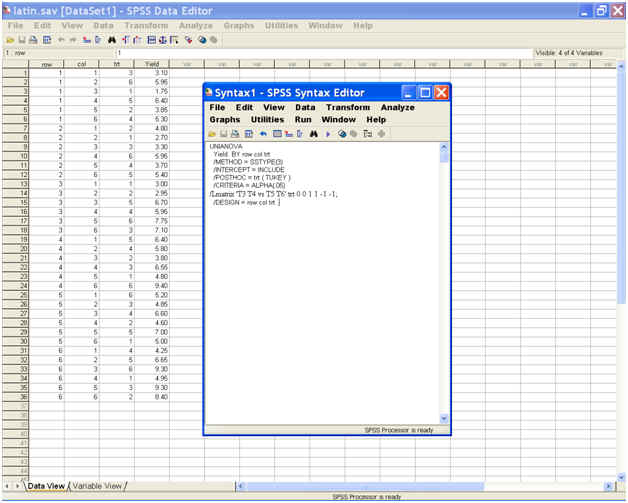
·
Click Run → All.
To perform the analysis, the following syntax may be
used after creating the data file.
UNIANOVA
Yield BY row col trt
/METHOD = SSTYPE(3)
/INTERCEPT = INCLUDE
/POSTHOC = trt ( TUKEY )
/CRITERIA = ALPHA(.05)
/Lmatrix 'T3 T4 vs T5
T6' trt 0 0 1 1 -1 -1;
/DESIGN = row col trt .
Analysis Using SAS Analysis Using SPSS
Home Descriptive Statistics Tests of Significance Correlation and Regression Completely Randomised Design RCB Design
Incomplete Block Design Resolvable Block Design Augmented Design Latin Square Design Factorial RCB Design
Partially Confounded Design Factorial Experiment with Extra Treatments Split Plot Design Strip Plot Design
Response Surface Design Cross Over Design Analysis of Covariance Diagnostics and Remedial Measures
Principal Component Analysis Cluster Analysis Groups of Experiments Non-Linear Models
Copyright Disclaimer How to Quote this page Report Error Comments/suggestions
(Under Development)
For
exposure on SAS, SPSS,
MINITAB, SYSTAT and
MS-EXCEL
for analysis of data from designed experiments:
Please see Module I of Electronic Book II: Advances in Data Analytical Techniques
available at Design Resource Server (www.iasri.res.in/design)